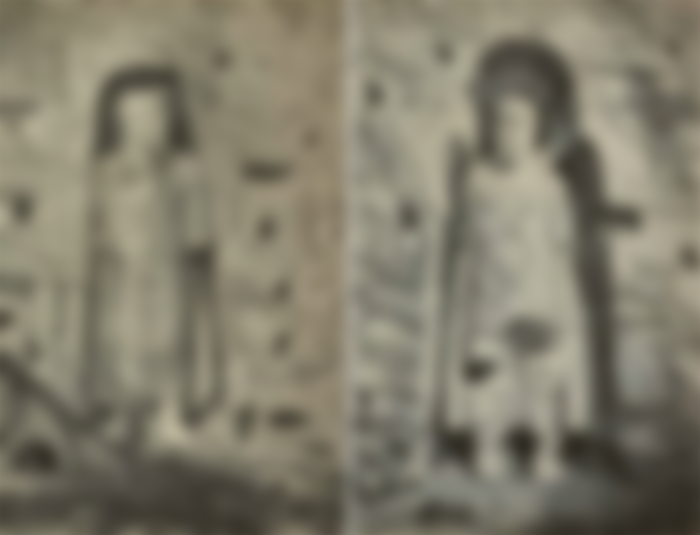Afghanistan, a country we rarely hear about other than war and conflict. It is located in Asia, on the west it borders with Iran, on the north it is surrounded by Turkmenistan, Uzbekistan and Tajikistan, on the east it has a border with China, while on the east and south it borders with Pakistan.
Afghanistan is a continental country with a predominantly mountainous relief. The Hindu Kush mountain range covers most of the country. In the south of Afghanistan is the desert plateau of Rigestan.
Unfortunately, for years, the first associations to Afghanistan have been poverty, terrorism and a war that does not stop. And, it wasn't always like that… It is a land of lavish beauty and tradition for decades. Yet under the rain of Taliban bombs, history has perished (and still suffers). One of the biggest victims of that regime fell in 2001…
The Bamyan Valley in Afghanistan at an altitude of about 2,500 meters was home to the largest upright Buddha statues in the world. "Bila" because the statues were destroyed by the Taliban in 2001, despite protests and pleas from around the world.

This whole area used to live much differently. Bamiyan was located on the southern branch of the Silk Road, at the crossroads of trade routes between China, Persia and the Mediterranean, which adorned it as a place of cultural and material prosperity. King Kaniška, who ruled the Bamiyan area in the 2nd century, embraced Buddhism and planned the valley to become a place of pilgrimage for members of this religion.

The statues were created during the reign of the White Huns. They were carved during the 6th century in red sandstone - "Little Buddha" about 35 meters high was created around 500 and "Big" from an impressive 55 meters high about 550 years.
According to ancient stories, the statues were originally covered with gold and decorated with precious stones. The faces of the giant Buddha statues are gilded, and jewels shine from their eyes - the Chinese travel writer Huan Cang wrote in the 7th century. Until then, Bamiyan was one of the largest Buddhist centers in the whole world. In the rock in which the Buddhas were carved, it is still possible to see the caves where pilgrims lived in the past. The ceilings of some of them, but also the vault around the heads of the Buddhas were decorated with rich iconography whose traces are still visible.
As Islam suppressed Buddhism, so did the hard days for the Buddhas of Bamiyan… Statues first lost ornaments and jewelry, then faces and hands, and became increasingly targeted by robbers and religious fundamentalists under the pretext of representing idols. Among other things, there were several attempts at destruction in the 17th century, but, although damaged, the Buddhas somehow reached the 20th century itself.
In happier times they were visited by travel writers, merchants, pilgrims, tourists. During the evil days the plateau at the top above them became a place of bitter fighting, for from it the whole valley could be controlled. The caves became magazines for weapons, and mujahideen, Soviet units… and eventually the Taliban took turns there.
The destruction that the whole world watched
After the Taliban ruled the valley, the Buddhas immediately found themselves married. In September 1998, the face of a smaller Buddha was destroyed. However, for complete destruction, the statues proved to be a "hard nut".
The Taliban have been trying for months to destroy the statues by firing cannons, tanks and rockets at them. Parts of the Buddha fell off, but they survived. And then, on the orders of Mullah Mohammed Omar, after the Taliban government declared them idols, the statues were mined
The devastation failed to prevent the pleas and interventions of organizations, as well as Western or Islamic states from around the world. The then Secretary General of the United Nations, Kofi Annan, even handed over the offer of the New York Metropolitan to transfer the Buddhas to America to the Taliban Foreign Minister Vakil Ahmed Mutawakil, but nothing was done.
"The destruction of the statues will not improve the image that the Taliban enjoy in the world, but relations with foreign countries are secondary to religious interests," said Minister Mutawakil simply, thus rejecting any possibility of negotiations. And so, on March 12, 2001, the largest standing Buddhas in the world, magnificent statues and part of the world’s cultural heritage, disappeared forever with one explosion.
In 2003, the archaeological remains of the Bamiyan Valley were inscribed on the UNESCO World Heritage List in Asia and Australia. At the same time, they have reached the list of the most endangered World Heritage sites and are still there today.
The remains of the Buddha can still be seen below the niches in which they once stood, and teams of international archaeologists are gradually working on their classification and identification. So far, there have been several announcements of the reconstruction of the statue. Most think that the restoration would allow the Buddhas to remain cultural monuments, and perhaps re-encourage tourism in the region. However, there are those who believe that everything should remain as it is now, as a warning and a monument to human barbarism.


It is terrible how much damage was done by human malice and wars. I can't understand people who don't see that there is a place for all of us on this beautiful planet of ours and that in reality no one endangers anyone, but ... I hate ideologies and especially those that are the reason for total destruction and destruction of everything from human lives to to the beautiful monuments that have witnessed the ancient times of human civilization ... a pity.